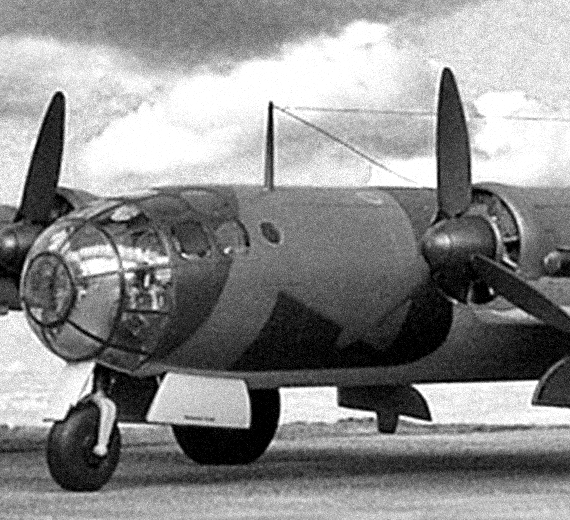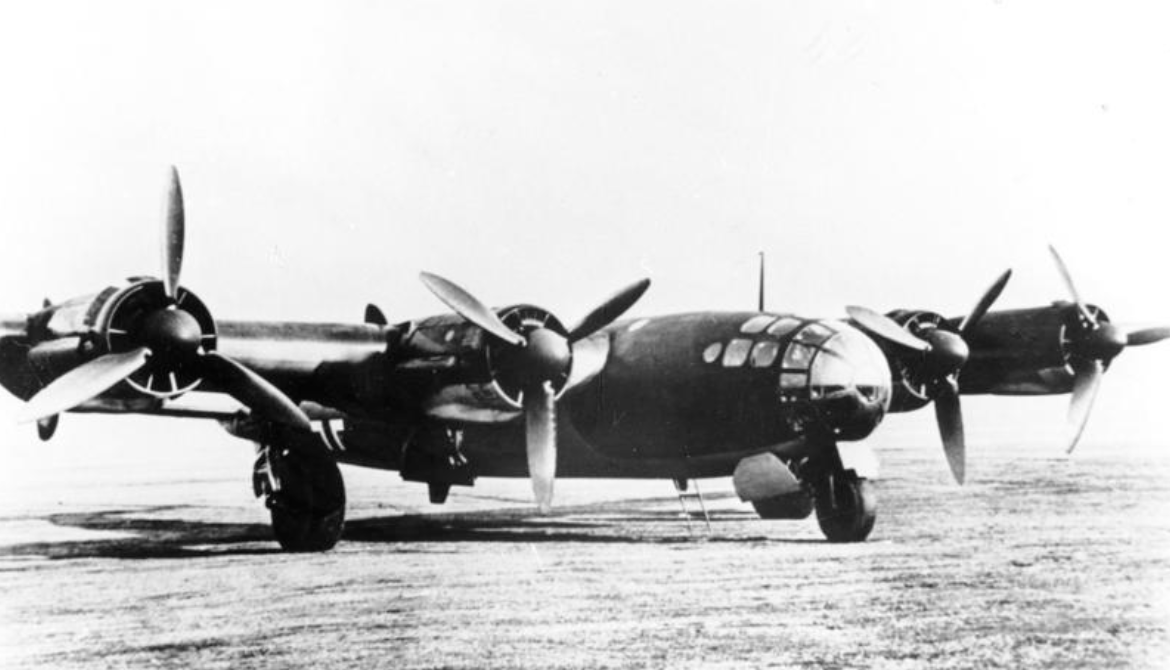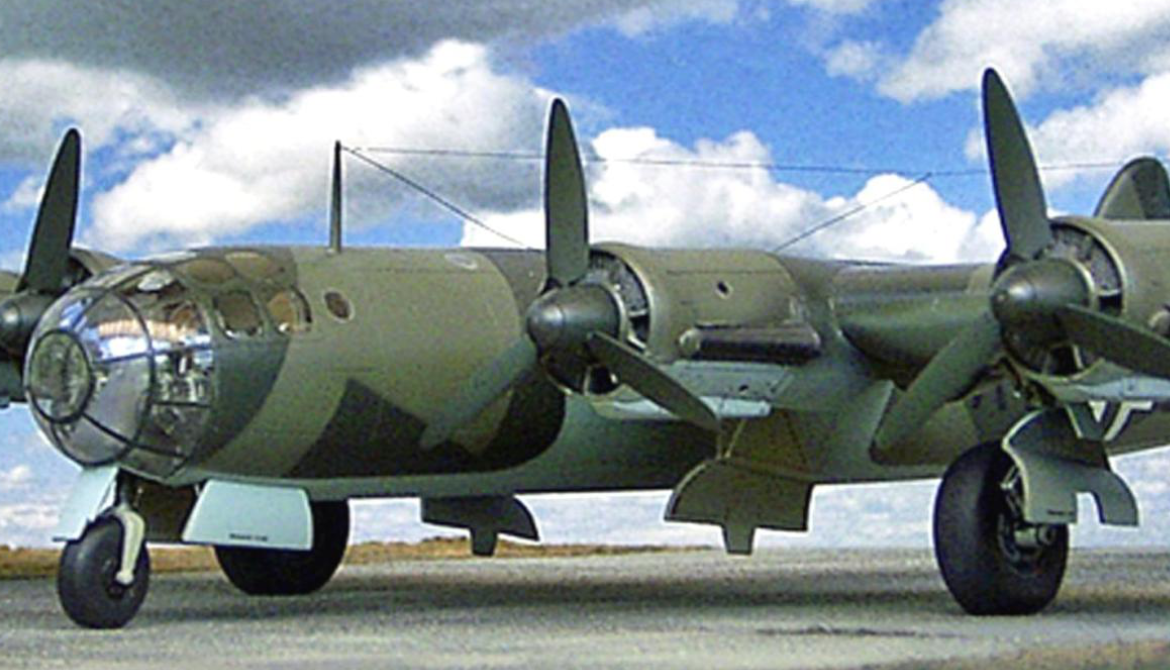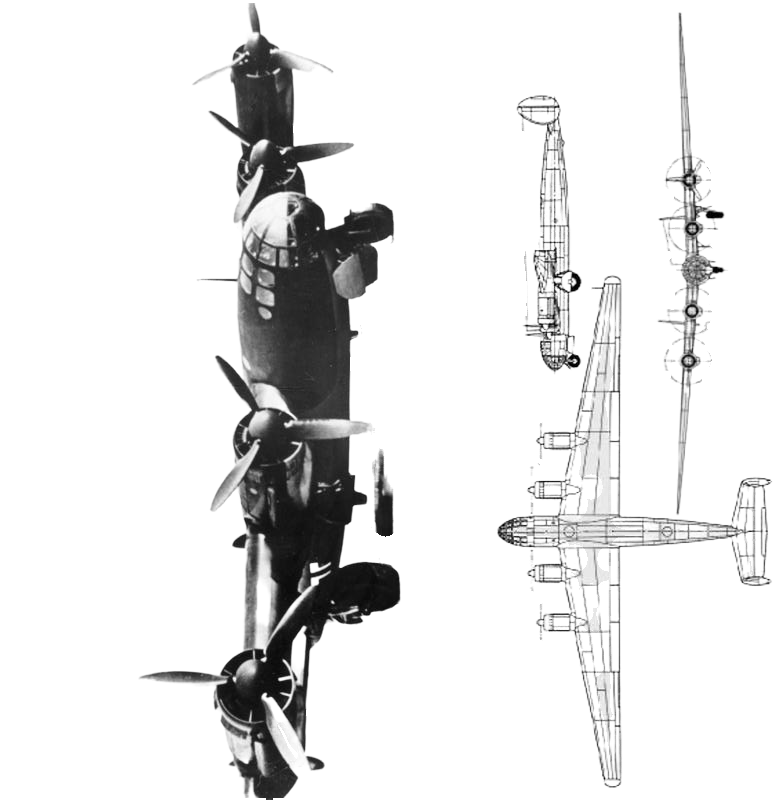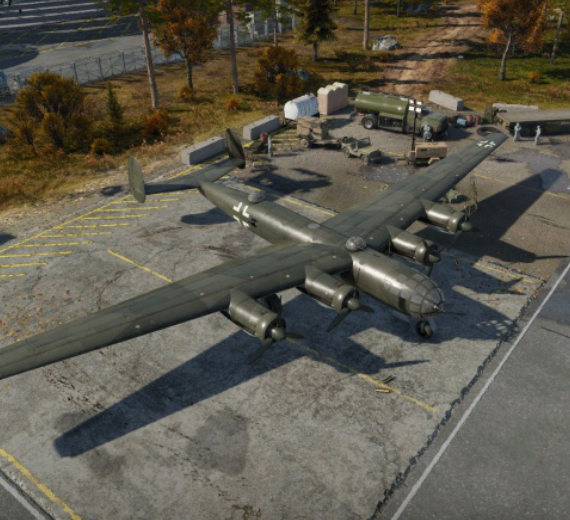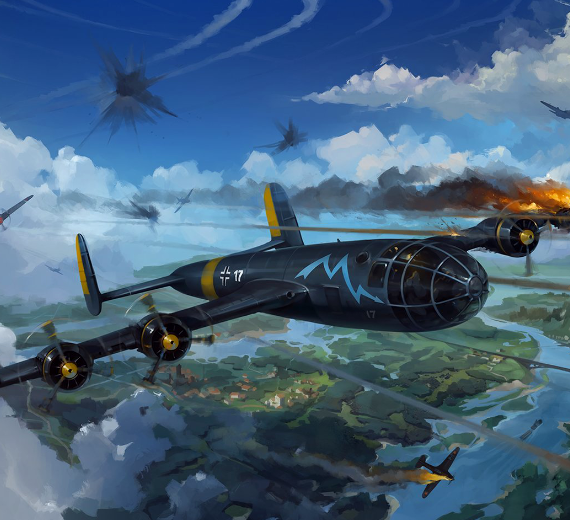Messerschmitt AG
ME 264 Bomber
Role Trans-oceanic Strategic bomber/
Maritime patrol aircraft
Manufacturer Messerschmitt
Designer Wolfgang Degel, Paul Konrad and Woldemar Voigt
First flight 23 December 1942
Introduction 1942
Status Cancelled
Primary user Luftwaffe
Number built 3
Developed into Messerschmitt P.1107
.
History Bayerische Flugzeugwerke (BFW)
Messerschmitt AG
Messerschmitt ME 264
America Bomber
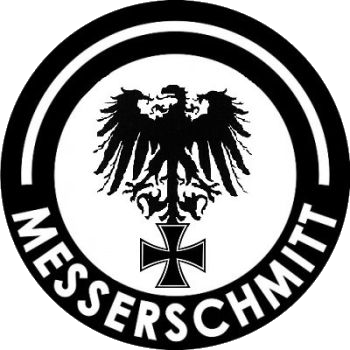
The Messerschmitt Me 264 was a long-range strategic bomber developed during World War II for the German Luftwaffe as its main strategic bomber. The design was later selected as Messerschmitt's competitor in the Reichsluftfahrtministerium's (the German Air Ministry) Amerikabomber (America Bomber) programme, for a strategic bomber capable of attacking New York City from bases in France or the Azores.
The origin of the Me 264 design came from Messerschmitt's long-range reconnaissance aircraft project, the P.1061, of the late 1930s. A variant on the P.1061 was the P.1062 of which three prototypes were built, with only two "engines" to the P.1061's four, but they were the more powerful Daimler-Benz DB 606 "power systems", each comprising a pair of DB 601 inverted V-12 engines. These were also used in the long-range Messerschmitt Me 261, itself originating as the Messerschmitt P.1064 design of 1937. The DB 606's later use in the Heinkel He 177A's airframe design resulted in derision by Reichsmarschall Hermann Göring as "welded-together engines" in August 1942, due to badly designed engine installations. In early 1941, six P.1061 prototypes were ordered from Messerschmitt, under the designation Me 264. This was later reduced to three prototypes.Messerschmitt Bf 109
Operational history

0
KmCeiling
0
KmCombat RANGE
0
Km/hAircraft Speed
0
Max Crew
Photo Gallery
Bayerische Flugzeugwerke (BFW)
Messerschmitt
Messerschmitt ME 264 America Bomber


Bayerische Flugzeugwerke (BFW)
Messerschmitt
Messerschmitt ME 264 America Bomber
General Info
-
-
- Crew: 8
- Length: 20.8979 m (68 ft 6.75 in)
- Wingspan: 43.00 m (141 ft 1 in)
- Height: 4.2990 m (14 ft 1.25 in)
- Wing area: 127.700 m2 (1,374.55 sq ft)
-
Powerplant
-
- Empty weight: 21,150 kg (46,627 lb)
- Max takeoff weight: 56,001 kg (123,460 lb)
- Powerplant: 4 × BMW 801D (or BMW 801G) 14-cylinder air-cooled radial piston engines, 1,300 kW (1,700 hp) each for take-off
-
-
-
- 1,070 kW (1,440 hp) at 5,700 m (18,700 ft)
-
-
- Propellers: 3-bladed constant-speed propellers
-
Performance
- Maximum speed: 520 km/h (320 mph,
-
-
- Maximum speed: 546 km/h (339 mph, 295 kn) at 36,000 kg (79,366 lb) at 6,101 m (20,015 ft)
-
-
- 470 km/h (290 mph; 250 kn) at 34,400 kg (75,840 lb) at 8,300 m (27,230 ft)
- 565 km/h (351 mph; 305 kn) at 8,300 m (27,230 ft) with GM-1 operating
- 470 km/h (290 mph; 250 kn) at 34,400 kg (75,840 lb) at 8,300 m (27,230 ft)
-
- Cruise speed: 349 km/h (217 mph, 188 kn) at 8,001 m (26,250 ft)
- Range: 15,000 km (9,300 mi, 8,100 nmi) 333 km/h (207 mph; 180 kn)
- Service ceiling: 8,000 m (26,250 ft) at 36,000 kg (79,366 lb)
- Rate of climb: 2.00 m/s (393 ft/min)
Armament
-
Guns: ** 4 × 13 mm (0.51 in) MG 131 machine guns
- 2 × 20 mm MG 151/20 cannon
- Bombs: 3,000 kg (6,614 lb) bombload in internal bomb bay at 14,400 km (8,947 miles). 6,000 kg (13,200 lbs) bombload in internal bomb bay at 8,600 km (5,343 miles)
.
Links to Youtube & Others
Three prototypes were built but production was abandoned to allow Messerschmitt to concentrate on fighter production and the Junkers Ju 390 was selected in its place. Development continued as a maritime reconnaissance aircraft instead.
Messerschmitt ME 264 America Bomber
The Me 264 was an all-metal, high-wing, four-engine heavy bomber of classic construction
Youtube Link
The two pending prototypes were ordered to be completed as development prototypes for the Me 264A ultra long-range reconnaissance aircraft.[3]

